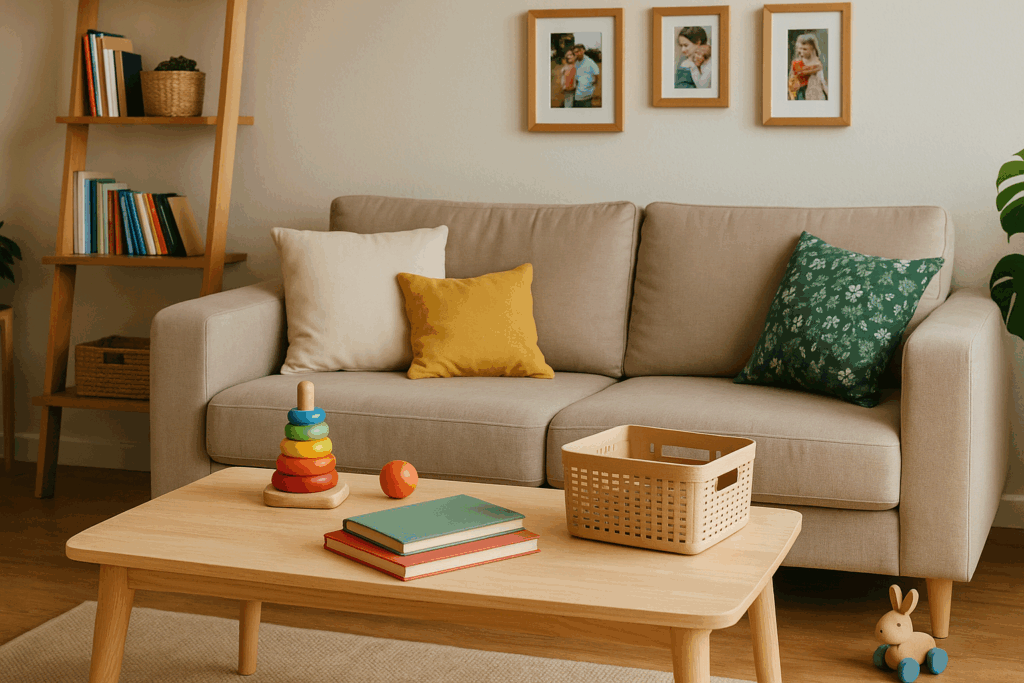I hear it all the time, “I’m going to …”, “This will be good for…”, “When I … this will…” [Insert potential use for your object here].
You know that hobby you were going to start three years ago? Or the clothes that will totally fit once you finally stick to your morning walks? Or maybe that box of craft supplies you were sure would spark joy… once you had a weekend free?
That’s not clutter, right? That’s potential.
But what happens when potential starts to weigh you down instead of lift you up?
When Clutter Isn’t Just Stuff
The hardest things to declutter aren’t the broken gadgets or the duplicate mixing bowls (though these can be hard for some of us too) — they’re the useful things. The could-be-useful, the should-be-useful, the “one day I might need this” things.
They tug on your imagination. They whisper about possibilities and past lives. Each one represents a version of you — the person you were, or the one you might still become.
But not everything with potential belongs in your present. Sometimes, what we call “clutter” is just untamed potential — waiting for you to decide what form it should take next.
The Potential (or Fantasy) Self and “One Day” Clutter
You know her — your Fantasy Self. She’s the one who meal preps every Sunday, actually uses the yoga mat, and keeps her succulents alive (No? Just me? Oh ok.) . She’s also the reason you have camping gear (but haven’t camped), craft supplies (but no finished projects), and a stack of fancy notebooks (but write your to-do list on the back of an envelope).
We hold onto things for the people we wish we were — or hope to be again one day. And that’s okay! It’s human. But there’s power in asking:
“What season of life am I actually in right now?”
If your real self is juggling work, family, and the occasional nap, your Fantasy Self might need to take a back seat for a bit.
The Ghosts of Our Past Selves
Some items are relics from past lives — not haunted exactly, but heavy with memory.
The running shoes from your marathon season.
The study supplies from your TAFE course.
The blazer from your corporate days before you pivoted to something more you.
These things hold emotional residue — a little pride, a little nostalgia, maybe even grief. Letting them go can feel like erasing a chapter of your story.
But here’s a thought:
“Do I want to be this person again — or am I just afraid of letting her go?”
And if you did return to that season, would you really want these things back — or would you choose something new that fits who you are now?

Curate with Compassion (The D.C.L.T.R. Way)
In my D.C.L.T.R. framework, the Curate stage is where we decide what stays and what goes — not with guilt, but with grace.
Curation is about intention, not perfection. It’s about asking the right questions:
- Would I pack this for my dream life?
- Is this item aligned with who I’m becoming today?
- Is this an anchor or a launch pad?
The goal isn’t to get rid of everything — it’s to choose what supports the life you actually want, not the one you’ve outgrown.
When Potential Becomes Pressure
As The Minimalists say, most of our ‘just in case’ items are really ‘just in fear. Sometimes, the things we keep for “potential” start to feel like homework.
Here’s how to spot it:
- You feel a twinge of guilt every time you see it.
- You avoid the space it’s in.
- You’re keeping it “just in case” — but you never actually use it.
That’s when “untamed potential” becomes emotional clutter. It’s okay to say, “I don’t have to carry this anymore.”
Letting go doesn’t mean you’ve failed — it means you’ve released the pressure to be everything, all at once.
Full disclosure: I do keep some things purely for their sentimental value — or simply because they make me smile. But if something’s not earning its keep in some way, it’s fair game. What we’re really talking about here are the items that pretend to be useful but aren’t pulling their weight. As I tell all my clients: you can keep anything and everything you want, as long as you’re choosing it on purpose — not out of guilt, habit, or wishful thinking.
What to Do About It
You don’t have to make a big dramatic purge. Start small; TRY:
✨ A Trial Separation Box
Pack those “maybe one day” items away for a few months. If you don’t miss them, you’ve got your answer.
✨ Resource Redistribution
Give your items to someone who is in that season of life. I like to think of it as giving the objects a chance to live up to their potential – like when Andy gives his beloved toys to Bonnie at the end of Toy Story 3.
✨ Document & Release
Take a photo. Write down the story or memory. Then, let it go. You’ll keep the meaning without keeping the mess.
Space is Potential Too ✨
Every item you release creates room — not just on the shelf, but in your mind and energy.
Space is potential, too.
It’s potential for rest. For clarity. For creativity. For the real you to breathe and grow.
So the next time you’re not sure if something’s clutter or possibility, ask yourself this:
“Is this helping me live the life I dream of — or just taking up space in it?”
Feeling stuck between potential and pressure?
Explore the Curate phase in my D.C.L.T.R. framework — or book a Side-by-Side Session and I’ll help you untangle what’s serving you, and what’s secretly holding you back.
